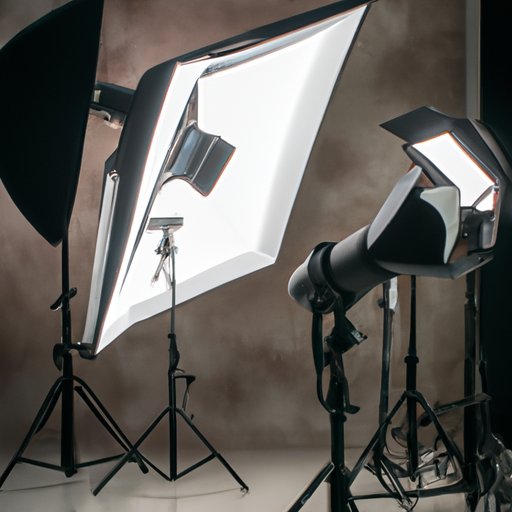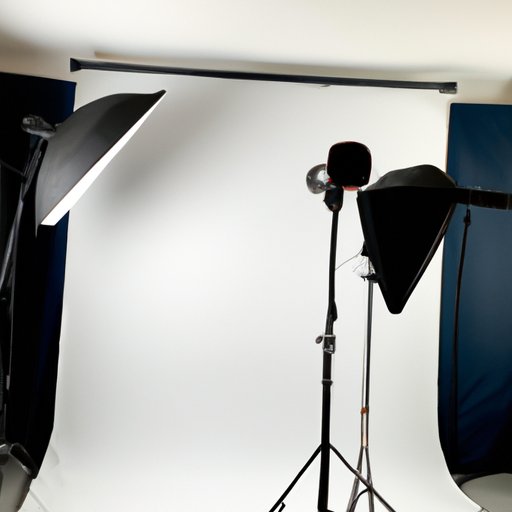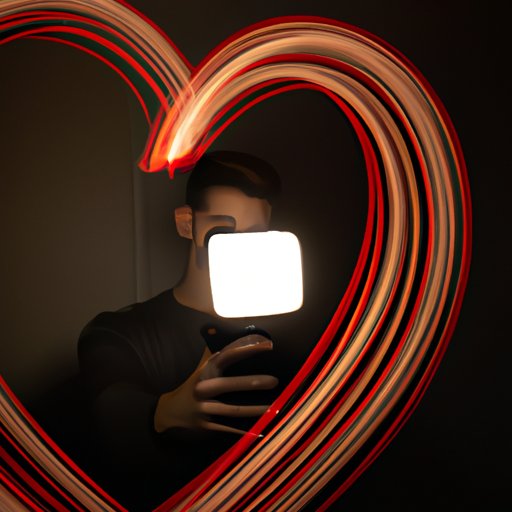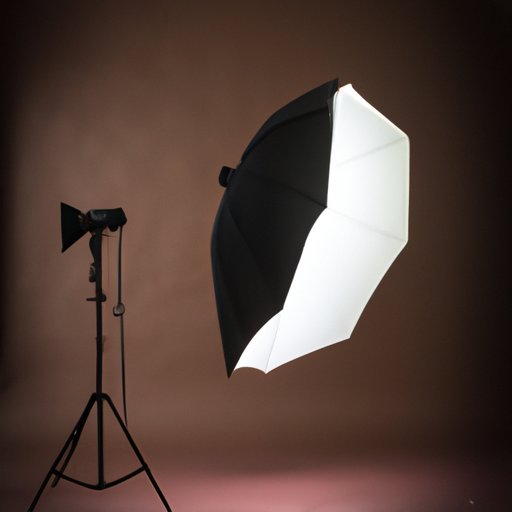Introduction
Photography lights are essential tools for photographers of all levels. Whether you’re a beginner or a professional, understanding how to use photography lights can help you create stunning images with perfect lighting. In this article, we’ll explore the basics of photography lighting, as well as some tips and tricks for using them to their fullest potential.
Definition of Photography Lights
Photography lights, also known as studio lights, are artificial sources of light used in photography. These lights come in a variety of shapes and sizes, from small LED lights to large monolights. They provide a reliable source of illumination that photographers can use to take better photos with better lighting.
Overview of the Benefits of Using Photography Lights
Using photography lights has many benefits, from improved image quality to increased control over the lighting. With photography lights, photographers have more control over the direction and intensity of the light, allowing them to create the exact look they’re after. Additionally, photography lights are often more powerful than natural light, meaning they can be used to take photos in low-light conditions. Finally, photography lights are often more affordable than other lighting options, making them an ideal choice for budget-conscious photographers.

Choosing the Right Photography Lights for Your Needs
When it comes to choosing photography lights, there are several factors to consider. From the type of lighting needed to the power of the lights, selecting the right photography lights is essential for achieving the desired results.
Identifying the Type of Lighting Needed
The first step in choosing photography lights is identifying the type of lighting needed. Different types of lighting are best suited for different types of photography. For instance, strobe lighting is typically used for portraiture, while continuous lighting is better suited for product photography. Understanding the type of lighting needed will help narrow down the selection and make the process of choosing photography lights easier.
Evaluating the Quality of the Lights
Once the type of lighting needed has been identified, it’s important to evaluate the quality of the lights. High-quality photography lights will produce better results, so it’s important to select lights that are of good quality. This means looking at things like build quality, power output, and color accuracy. Taking the time to evaluate the quality of the lights will ensure the best possible results.
Determining the Power of the Lights
In addition to evaluating the quality of the lights, it’s important to determine the power of the lights. The power of the lights will determine how much light is available and how long the lights can be used. Low-power lights may be fine for basic photography, but higher-powered lights may be required for more complex projects. Knowing the power of the lights will help ensure the desired results are achieved.

Setting Up Your Photography Lights
Once the right photography lights have been selected, it’s time to set them up. Setting up photography lights correctly is essential for achieving the desired results.
Selecting the Right Location
Before setting up the lights, it’s important to select the right location. The location should be free of obstructions and provide enough space for the lights to be set up. Additionally, the location should be close enough to the subject to ensure the desired results are achieved.
Setting Up the Lights
Once the location has been selected, it’s time to set up the lights. Start by positioning the lights and then connecting them to a power source. Be sure to read the instructions carefully to ensure the lights are set up properly. If the lights are adjustable, adjust them to the desired position before powering them on.
Adjusting the Intensity of Lighting
Once the lights are set up, it’s time to adjust the intensity of the lighting. Adjusting the intensity of the lighting will allow the photographer to achieve the desired results.
Utilizing a Light Meter
A light meter is a tool used to measure the intensity of light. By using a light meter, photographers can accurately adjust the intensity of the lights to achieve the desired results. The light meter should be placed near the subject and used to measure the light coming from the lights.
Modifying the Intensity of the Lights
Once the light meter has been used to measure the light, the intensity of the lights can be adjusted accordingly. This can be done manually or with the help of a light modifier such as a diffuser or reflector. By adjusting the intensity of the lights, photographers can achieve the desired results.
Understanding Color Temperature and Lighting Balance
Another important factor to consider when using photography lights is color temperature and lighting balance. Color temperature and lighting balance will affect the overall look of the image, so it’s important to understand how these elements work together.
Defining Color Temperature
Color temperature is the measurement of the color of light. Different colors have different temperatures, which can affect the look of the image. Common color temperatures range from warm (yellowish) to cool (bluish). It’s important to understand the color temperature of the lights and how it will affect the image.
Balancing Color Temperature
Once the color temperature of the lights has been determined, it’s important to balance the color temperature. Balancing the color temperature will help ensure the image looks natural and accurate. This can be done by adding filters or adjusting the white balance settings on the camera.

Creating Different Effects with Photography Lights
Photography lights can be used to create different lighting effects. From dramatic shadows to soft and even lighting, photography lights can be used to create a wide variety of looks.
Exploring Different Angles
One way to create different lighting effects is to explore different angles. By changing the angle of the lights, photographers can create different shadows and reflections that will enhance the look of the image. Experimenting with different angles will help photographers find the best lighting setup for their needs.
Utilizing Light Modifiers
Light modifiers, such as softboxes and umbrellas, can also be used to create different lighting effects. These modifiers can help soften the light or create dramatic shadows. Utilizing light modifiers will help photographers achieve the desired results.

Using Reflectors and Diffusers to Modify Light
Reflectors and diffusers are another type of light modifier that can be used to modify the light. Reflectors can be used to redirect light and fill in shadows, while diffusers can be used to soften the light and reduce contrast. Selecting the right reflector or diffuser and placing them correctly will help photographers achieve the desired results.
Conclusion
Photography lights are essential tools for photographers of all levels. Understanding how to use photography lights can help photographers create beautiful images with perfect lighting. From selecting the right photography lights to setting them up and adjusting the intensity, this guide provides a comprehensive overview of how to use photography lights. With the right knowledge and techniques, photographers can use photography lights to create stunning images.
Summary of Key Points
• Photography lights are artificial sources of light used in photography.
• Different types of photography lights are best suited for different types of photography.
• It’s important to evaluate the quality and power of the lights before purchasing.
• Setting up the lights correctly is essential for achieving the desired results.
• Utilizing a light meter and adjusting the intensity of the lights will help achieve the desired results.
• Color temperature and lighting balance can affect the look of the image.
• Photography lights can be used to create different lighting effects.
Final Thoughts
Photography lights are essential tools for photographers of all levels. With the right knowledge and techniques, photographers can use photography lights to create stunning images. Learning how to use photography lights correctly will help photographers take better photos with better lighting.
(Note: Is this article not meeting your expectations? Do you have knowledge or insights to share? Unlock new opportunities and expand your reach by joining our authors team. Click Registration to join us and share your expertise with our readers.)
